
Since 2002, Google has honored 25 historical people with custom-made versions of the Google logo, displayed for one day on the Google homepage.
Judging by the people Google have selected so far, don’t expect any WWF wrestling stars to show up anytime soon. It’s an elite collection of highly influential scientists, artist and architects who have made their mark on human history and culture.
Here they are, all 25 of them, in reverse chronological order.
René Magritte
(1898 – 1967) Belgian surrealist artist, famous for his often witty and amusing images.

Shown on the Google homepage on November 21, 2008.
Marc Chagall
(1887 – 1985) Russian Jewish modernist artist. He was a pioneer of modernism and one of the most successful artists of the twentieth century.
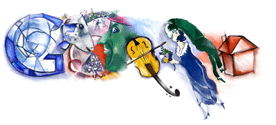
Shown on the Google homepage on July 7, 2008.
Diego Velázquez
(1599 – 1660) Spanish painter and portrait artist, many of his famous paintings depicting scenes of historical and cultural significance, royalty and notable European figures of the time.
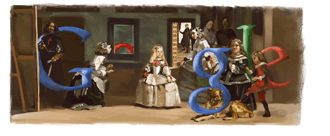
Shown on the Google homepage on June 6, 2008.
Walter Gropius
(1883 – 1969) German architect, founder of Bauhaus and a pioneer of modern architecture.

Shown on the Google homepage on May 18, 2008.
Alexander Graham Bell
(1847 – 1922) Scientist and inventor famous for, among other things, inventing the telephone.
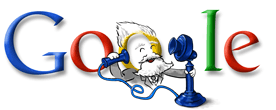
Shown on the Google homepage on March 3, 2008.
Luciano Pavarotti
(1935 – 2007) Italian opera singer, part of “The Three Tenors” and one of the world’s most famous vocal artists.

Shown on the Google homepage on October 12, 2007.
Yuri Gagarin
(1934 – 1968) Soviet cosmonaut who was the first man in space and the first to orbit Earth.
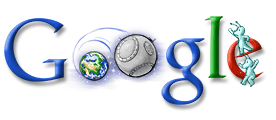
Shown on the Google homepage on April 12, 2007.
Edvard Munch
(1863 – 1944) Norwegian symbolist painter, known for his expressionistic art. His painting The Scream is one of the most recognizable in all art (and indeed the one Google used as basis for the themed logo).
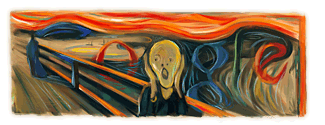
Shown on the Google homepage on December 12, 2006.
Sir Arthur Conan Doyle
(1859 – 1930) British author mostly known for his novels about Sherlock Holmes, one of the most famous fictional characters of all time.
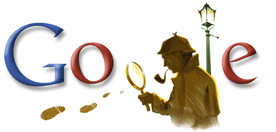
Shown on the Google homepage on May 22, 2006.
Percival Lowell
(1855 – 1916) American astronomer (among other things) famous for his study of Mars and founder of the Lowell Observatory, which after his death discovered Pluto.
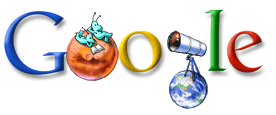
Shown on the Google homepage on March 13, 2006.
Wolfgang Amadeus Mozart
(1756 – 1791) Austrian musical prodigy and one of the most popular classical composers of all time.
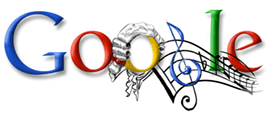
Shown on the Google homepage on January 27, 2006.
Martin Luther King Jr.
(1929 – 1968) African American minister, probably most famous for his work against racial segregation and discrimination, which also earned him the Nobel Peace Prize.
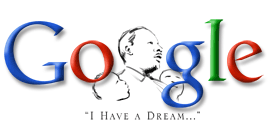
Shown on the Google homepage on January 16, 2006. Google has a themed logo every Martin Luther King Jr. Day.
Louis Braille
(1809 – 1852) The inventor of braille, a widely used reading and writing system for the blind and visually impaired (he was blind himself).
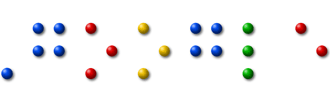
Shown on the Google homepage on January 4, 2006.
Frank Lloyd Wright
(1867 – 1959) American architect and interior designer. The American Institute of Architecture has named him “the greatest American architect of all time”.

Shown on the Google homepage on June 8, 2005.
Leonardo da Vinci
(1452 – 1519) Italian polymath, doing groundbreaking work as a scientist, engineer, inventor, anatomist, painter and more. Often described the archetypal Renaissance man and one of the most widely talented people of all time.

Shown on the Google homepage on April 15, 2005.
Vincent van Gogh
(1853 – 1890) Dutch Post-Impressionist artist and a pioneer of Expressionism. And yes, he’s the one who cut off part of his own ear.
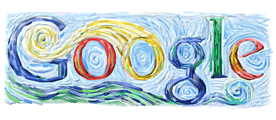
Shown on the Google homepage on March 30, 2005.
Ray Charles
(1930 – 2004) American pianist and soul singer. Rolling Stone magazine ranked him as number two on its list of the 100 greatest singers of all time.

Shown on the Google homepage on September 23, 2004.
Gaston Julia
(1893 – 1978) French mathematician who devised the formula for the Julia set, common for generating fractals.
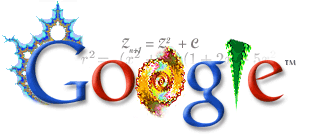
Shown on the Google homepage on February 3, 2004.
Alfred Hitchcock
(1899 – 1980) British film director and producer, a pioneer of the suspense and psychological thriller genres. He is one of the best-known filmmakers of all time.
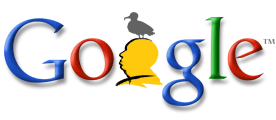
Shown on the Google homepage on August 13, 2003.
M. C. Escher
(1898 – 1972) Dutch graphic artist, famous for his mathematically inspired images of impossible constructions and geometric figures.
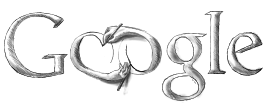
Shown on the Google homepage on June 16, 2003.
Albert Einstein
(1879 – 1955) German theoretical physicist, best known for his theory of relativity but contributed greatly to multiple fields within physics, for which he also received the Nobel Prize in Physics. He is regarded as one of the most influential people in human history.

Shown on the Google homepage on March 14, 2003.
Michelangelo
(1475 – 1564) Italian painter, sculptor, architect and engineer. Together with Leonardo da Vinci, he is often cited as the archetypal Renaissance man.
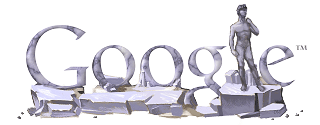
Shown on the Google homepage on March 6, 2003.
Pablo Picasso
(1881 – 1973) Andalusian-Spanish painter and sculptor. Famous for (among other things) founding the Cubist movement. He also has one of the longest full names we’ve ever seen. Try this on for size: Pablo Diego José Francisco de Paula Juan Nepomuceno María de los Remedios Cipriano de la Santísima Trinidad Martyr Patricio Clito Ruíz y Picasso.
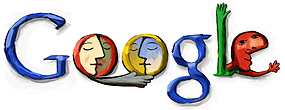
Shown on the Google homepage on October 25, 2002.
Andy Warhol
(1928 – 1987) American artist and illustrator and a well-known figure in the Pop Art movement. In addition to his many works of art, he is also famous for being the originator of the concept of “15 minutes of fame”.

Shown on the Google homepage on August 6, 2002.
Piet Mondrian
(1872 – 1944) Dutch painter and an important contributor to the abstract De Stijl art movement.
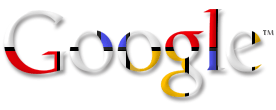
Shown on the Google homepage on March 7, 2002.
Now, one wonders, who’s next in line to get his/her own Google logo? Any ideas? 🙂
Image source: Google.



























